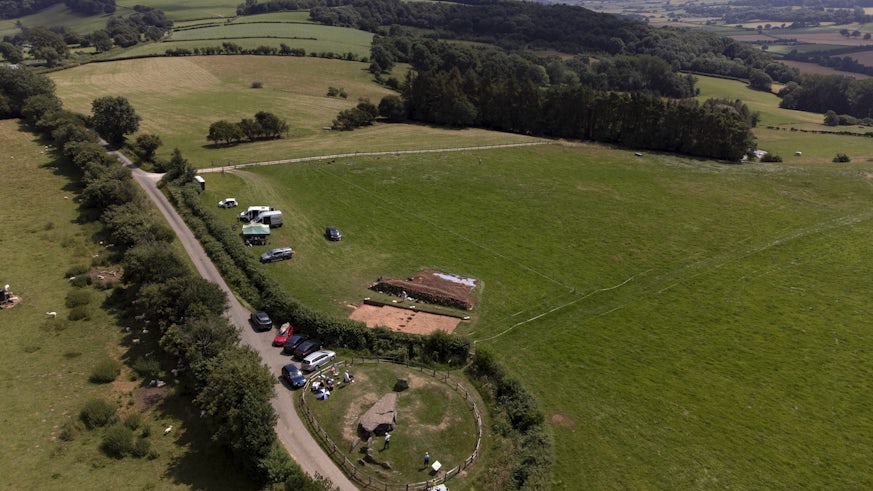What lies beneath: origins of Arthur’s Stone revealed by archaeologists
12 August 2021

First ever excavation of ancient site that inspired beloved children’s novel links to Halls of the Dead
Archaeologists from Cardiff University and the University of Manchester have discovered the origins of Arthur’s Stone, the famous prehistoric monument that inspired the mystical stone table that features in The Lion, The Witch and The Wardrobe.
The archaeology teams have found evidence that the imposing Herefordshire tomb is linked to nearby ‘halls of the dead’, only discovered in 2013.
It is the first time the construction - which inspired the stone table which features in C.S. Lewis’ children’s classic - has been fully excavated.
Dating to 3700BC, Arthur’s Stone – a scheduled monument cared for by English Heritage - sits on a hilltop outside of the village of Dorstone, overlooking the Black Mountains.
Previously, archaeologists had assumed that its massive capstone raised on a series of supporting stones and lesser chamber with a right-angled passage had stood within a wedge-shaped stone cairn, like those found in the Cotswolds and South Wales.
Excavations this summer - undertaken by the team including Cardiff University archaeology students on placement - to the south of the burial chamber, outside of the area of guardianship of English Heritage, now show the monument originally extended to the south of the tomb.
Heading the excavations, Honorary Professor of Archaeology at Cardiff Keith Ray and Professor Julian Thomas of Manchester found that the tomb had first been a long mound composed of stacked turf, retained by a palisade of upright posts set in a narrow palisade surrounding the mound. In fact, when the posts rotted away and the mound had collapsed, an avenue of larger posts were added, leading toward the mound from the Golden Valley below.
The initial mound, identifiable in the palisade slot and the parch-marks visible from the air surrounding the stone chambers, points toward the nearby hilltop of Dorstone Hill.
Strikingly, the later avenue of posts, together with the two stone chambers and an upright stone located immediately in front of them, align on the far horizon in the gap between Skirrid and Garway Hill to the south-east.
Professor Ray expands: “An especially interesting discovery was that the principal orientation of the Arthur’s Stone mound is now shown to point directly towards the line of three turf and stone built Early Neolithic mounds at Dorstone Hill half a mile away, that we excavated between 2011 and 2017.”
“These Dorstone Hill mounds had deliberately covered the remains of three massive and very early Neolithic elongated rectangular buildings and this raises the prospect that the traces of yet another such building may exist beneath Arthur’s Stone itself. We hope to explore this possibility in a further season of excavation in 2022.”
The excavations at Arthur’s Stone form part of the Beneath Hay Bluff Project, which has been investigating early prehistoric southwest Herefordshire since 2010, under the directorship of Keith Ray and Julian Thomas, with associate directors Nick Overton (University of Manchester) and Tim Hoverd (Herefordshire Council).
